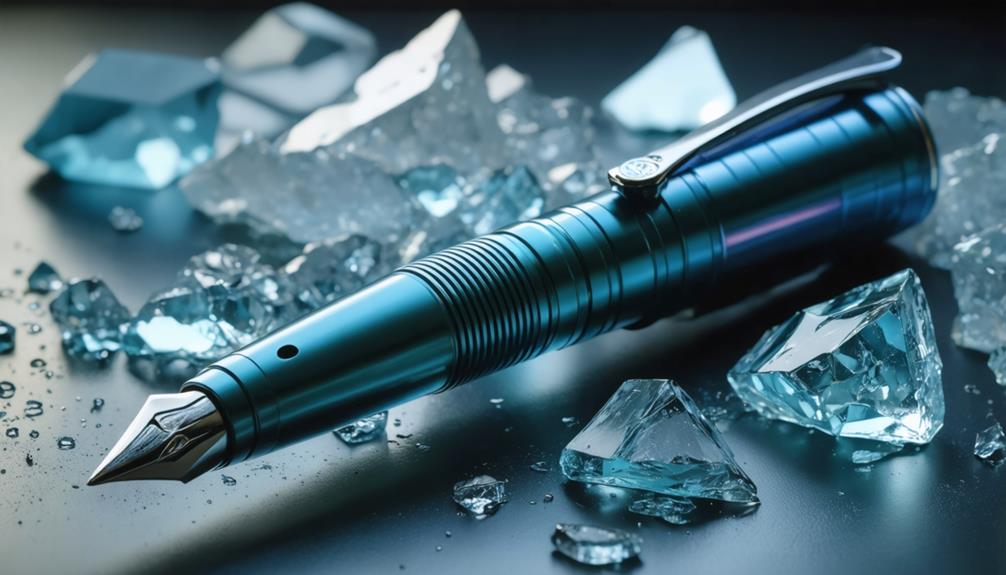
Brainstorm Security Shop

For Orders Over $199

On Any Of Our Products

Details On Refund Page
In an era where personal safety and preparedness are increasingly prioritized, the tactical pen with a glass breaker feature emerges as a versatile tool deserving closer scrutiny. Beyond its traditional function as a writing instrument, it offers critical utility in emergency situations, such as breaking through glass barriers. Crafted from robust materials, these pens promise reliability under pressure. However, what truly sets these pens apart is not merely their functionality but the subtleties in design and innovation present in leading models. What considerations should one weigh when selecting such a tool, and how can its full potential be realized?
Tactical pens, while often small and unassuming, offer a multitude of benefits that extend beyond their primary function as writing instruments. These versatile tools have gained popularity as a self defense tool, providing a discreet yet effective means of protection.
Constructed from durable materials like aircraft-grade aluminum or stainless steel, tactical pens are designed to withstand significant force, making them reliable in emergency situations. Their compact size ensures they can be conveniently included in one’s everyday carry, seamlessly integrating into daily routines without drawing unnecessary attention.
In the realm of self-defense, tactical pens serve as a legal alternative to more conspicuous weapons. Their pointed ends and sturdy build allow for effective use in close-quarter scenarios, providing individuals with the confidence to defend themselves if the need arises.
Additionally, the practicality of having a writing instrument that doubles as a self-defense tool cannot be overstated—particularly in environments where conventional weapons are prohibited.
Furthermore, tactical pens are often equipped with additional features such as glass breakers, which can prove invaluable in emergency situations, such as vehicular accidents. This adaptability and multifunctionality make tactical pens an essential component of any comprehensive everyday carry strategy.
When evaluating tactical pens, it is crucial to consider several key features that enhance their functionality and reliability. One primary design consideration is the pen’s ability to seamlessly transition between writing and self-defense purposes. A well-designed tactical pen should maintain the appearance of a conventional writing instrument while incorporating features that can be employed in emergency situations, such as a glass breaker or a self-defense tool.
The choice of material types plays a critical role in determining the durability and effectiveness of a tactical pen. High-quality materials like aircraft-grade aluminum, stainless steel, or titanium are preferred, as they provide the necessary strength and resilience for both writing and defensive functions. These materials ensure that the pen can withstand significant impact and pressure, which is essential for breaking glass or deterring an assailant.
Moreover, weight and balance are significant design considerations. A tactical pen must be lightweight enough for everyday carry, yet robust enough to perform effectively in emergencies. The grip should be ergonomic, allowing for a secure hold, which is vital during high-stress situations.
Utilizing a tactical pen effectively requires understanding its dual-purpose design and practicing its application in both writing and self-defense scenarios. A tactical pen serves as a reliable writing instrument while doubling as a self-defense tool, providing an edge in emergency situations. Mastering its use involves familiarizing oneself with basic self defense techniques that leverage the pen’s robust construction. The pen can be gripped firmly, allowing the user to strike an assailant with precision. It is essential to practice these techniques regularly to ensure swift and confident action when required.
In emergency situations, the tactical pen’s glass breaker tip is invaluable. This feature enables the user to shatter glass efficiently, facilitating escape from confined spaces such as vehicles. Understanding the mechanics of using the pen for breaking glass—such as targeting the corners of a window—can be lifesaving.
| Scenario | Recommended Action |
|---|---|
| Self Defense | Employ striking techniques |
| Writing | Use as a regular pen |
| Glass Breaking | Target window corners |
| Emergency Escape | Utilize in conjunction with other tools |
| Everyday Carry | Keep accessible at all times |
The table above outlines practical applications, ensuring users fully exploit the pen’s capabilities.
In the world of tactical pens, several top models stand out for their durability, functionality, and design. Among these, the Smith & Wesson SWPENMP2BK is frequently praised for its robust construction and sleek aesthetics. Known for being one of the top brands in the market, Smith & Wesson provides a tactical pen that doubles as a reliable glass breaker, with user reviews highlighting its sturdy build and ease of use.
Another popular choice is the Gerber Impromptu Tactical Pen. Designed with law enforcement in mind, this pen is lauded for its versatility and effectiveness in emergency situations. It features a dependable glass breaker tip and a Rite in the Rain ink cartridge, ensuring seamless writing in any weather condition. User reviews often commend its reliability and practicality.
The Schrade SCPEN9BK is also notable, offering a balance of affordability and performance. This tactical pen is constructed from anodized aluminum, providing both durability and a lightweight feel. It has garnered positive user reviews for its ergonomic design and functionality, which make it an excellent choice for both self-defense and everyday tasks.
These models exemplify the excellence and innovation associated with top brands in the tactical pen industry.
Owning a high-quality tactical pen, such as those highlighted among the top models on the market, requires a commitment to proper maintenance and care to ensure optimal performance and longevity. To begin with, adopting effective cleaning techniques is crucial. Regularly wipe down your tactical pen with a soft cloth to remove dirt and debris, focusing on the glass breaker tip to maintain its functionality. For deeper cleaning, use a mild detergent mixed with water; however, ensure all components are thoroughly dried to prevent corrosion.
Equally important are appropriate storage solutions. Store your tactical pen in a dry, cool environment to avoid exposure to moisture and extreme temperatures, which can degrade materials over time. Additionally, keeping the pen in a protective case when not in use can further safeguard it against environmental damage and accidental impacts.
The following table summarizes key maintenance practices:
| Task | Frequency | Additional Tips |
|---|---|---|
| Surface Cleaning | Weekly | Use a microfiber cloth |
| Deep Cleaning | Monthly | Employ mild detergent and water solution |
| Storage | Continuous | Utilize a protective case |
When assessing the legality of carrying certain items in public, legal considerations and public perception play crucial roles. Tactical pens with glass breakers may be viewed differently based on regional regulations and societal attitudes towards self-defense tools.
The effectiveness of a tactical pen for self-defense lies in its discreet design and versatility. Its advantages include portability and durability, providing individuals with a practical tool for protection while maintaining a non-threatening appearance in public spaces.
Glass breaking techniques rely on concentrated impact force to shatter glass efficiently. The effectiveness of the glass breaker tip varies with glass type; tempered glass responds differently than laminated, requiring more force or alternative breaking strategies.
Airport security and carry-on policies generally classify tactical pens as potential weapons. Passengers are advised to check with specific airlines and relevant authorities, as regulations may vary, to ensure compliance and avoid potential security concerns during air travel.
The materials most commonly used for manufacturing glass breakers focus on durability and efficiency. Tactical pen materials, such as tungsten carbide, stainless steel, and aluminum, enhance glass breaker durability, ensuring reliable performance in emergency situations.
